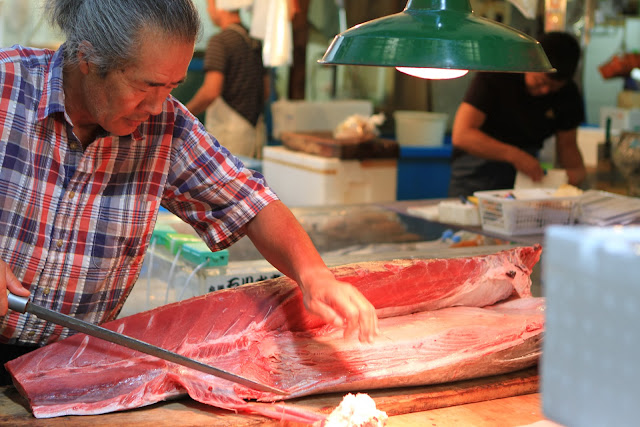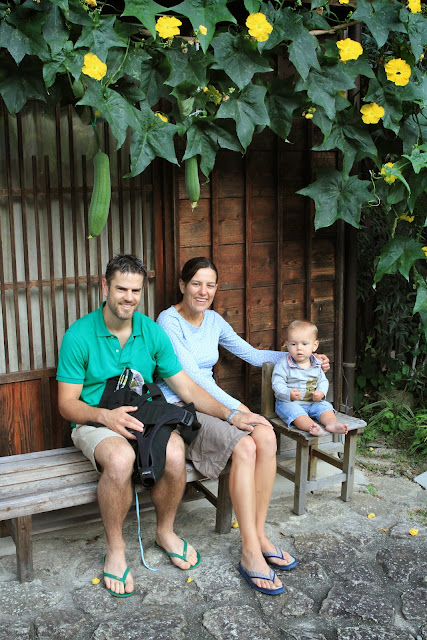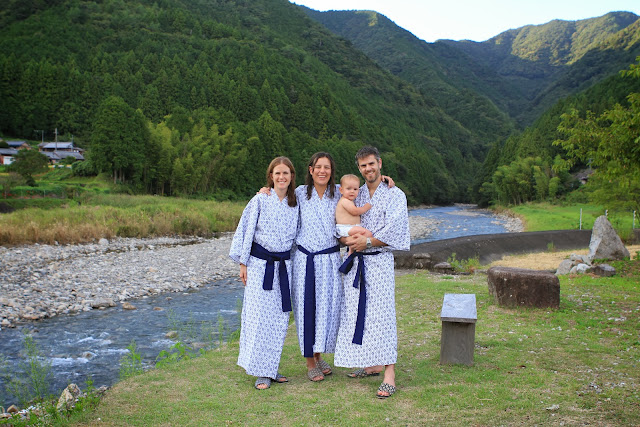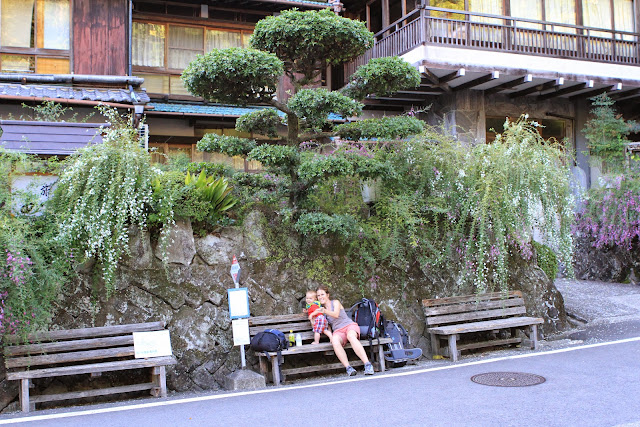For two weeks in September the van Deventer family and their trusted accomplice, Lizeli, traveled a small part of the largest of the 6,852 islands that make up Japan. Two weeks are not nearly enough to even experience a taste of what Japan has to offer in terms of culture, nature, cuisine and technology.
A little bit of background on Japan to set the scene. As mentioned Japan is an archipelago of 6,852 islands. Up to the end of the 19th century Japan was very isolated with little foreign influence. Japan hosts the worlds 10th largest population with over 126 million people. It has the world's third largest economy by GDP and fourth largest by purchasing power parity. Japan also ranks fourth largest exporter and fourth largest importer. What makes this extraordinary is that it's economic success has been build up from scratch after surrendering to the US in 1945.
Tokyo
Tokyo is crazy busy, however we enjoyed it much more than expected. It's a wonderful place to do bulk people watching. The highlight was definitely going the Tsukiji market, the largest fish market in the world. We had some sushi for breakfast at the market, a bit weird on the stomach but we managed by sticking to rolls and leaving the Sashimi for dinner.
The Tuna auction at the Tuskiji market is the largest of it's kind in the world. Hundreds of frozen Tuna are lined up to be auctioned off to the highest bidder.
Mount Fuji - on top of Japan
We made the journey up the famous Fuji-San with little Nicolaas on board. It's only six kilometers to the top (3,776m), but it's rather steep;o). The first three pictures were taken by Lake Shoji where we camped.
Kyoto
Kyoto is known as the cultural capital of Japan. It's worlds apart from Tokyo, but the one thing it has in common is streets lined with thousands of people.
Kinkaku-ji, also known as the Golden Temple
Kyoto is also home to some magnificent Japanese gardens
Another famous shrine in Kyoto is Fushimi Inari-taisha. There are thousands of these orange gates, known as "torri", that form trails up the mountain to the main shrine.
Nicolaas' first birthday
Nicolaas celebrated his first birthday in Japan. He had a Baumkuchen as birthday cake. It's originally a German cake and was introduced to Japan during World War I. It's delicious and Nicolaas loved it.
We encountered various baked and other goods that are from European decent, but it seems like the Japanese manage to out-do the founders and creators in their efforts on many occasions. Although we found the Japanese whiskey very easy drinking, maybe too easy, it was the one thing that did not come close to the real thing.
Onsen
Onsen is the Japanese name for a hot spring. As a volcanic hot spot, Japan has many onsen across the country. They are used as public bathing areas. We visited various onsen and they were all unique and on all occasions a wonderful experience. It's a bit strange at first to get naked and bath with people (of the same sex at least) you don't know, but you get used to it as for the locals it's just normal routine. Traditional Japanese houses will often not even have bathing facilities.
At the camping site near Hongu you can dig your own onsen. As we had beautiful weather we did not put a great effort into finding hot water, but we found a little pool with some warm water coming through for Nicolaas.
We also visited and hiked in the Japanese Alps which was breathtaking.
Although Japan is leading the way on many technological fronts, they manage to conserve their very rich culture.
Camping in Japan
Accommodation in Japan is very expensive, so we saved a lot by camping everywhere we could. The campsites were all in beautiful locations and of a very high standard. It also helped that we had great weather and a very happy little camper in baby Nicolaas.
Japanese rooms
Even though accommodation is really expensive you have to stay in a typical Japanese house at least a couple of nights. Their houses are decorated extremely simple with very little furniture. Beds in the form of futons are packed away after sleeping and replaced with a low table and cushions. With very few things standing around it is the perfect space for children as there is not much they can destroy, the things you start to appreciate when you have a little person around.
Kumano Kodo
We did a two day hike along the Kumano Kodo which is an ancient pilgrimage. To be honest, many of the shrines along the way was so small we missed most of it but the surrounding scenery was breathtaking. We stayed overnight at a local Minshuku, a Japanese guesthouse. The family that hosted us was lovely and some of a few people we encountered that spoke reasonable English. They served us the best meal we had in Japan.
The Food
We all know Sushi, but that makes up only a small part of Japanese cuisine. We ate a variety of things, some of which we're still not sure of what it was. To be honest, the Sushi we enjoy in London is much better than what we had in Japan. We suspect the main reason for this being that the fish used in Japan have been frozen where we are spoiled in the UK with fresh fish (well Salmon at least). The biggest food surprise was Japanese Beef, known as Wagyu beef, Wagyu literally means cow in Japanese. You might have heard of Kobe beef before. Rumor has it that Kobe cows sleep on mattresses and listen to classical music all day while being massaged, but Kobe beef is really just the Wagyu breed coming from the Kobe area. Whatever they sleep on, Wagyu tastes amazing. Uncooked the meat looks like marble. Coming from SA we are used to meat portions being 300g+, Wagyu is sold in 100g portions and that is more than enough. It's so rich that a few bites satisfy your meat need. It was some of the best meat we've had and great meat is not what we expected to find in Japan.
Coffee
Being the coffee lovers we are, we were grateful we took our own Bialetti with. Although coffee is very popular, they tend to drink it from a can. A standard vending machine (and there are vending machines everywhere, we even found them on our pilgrimage to our great disappointment) will have 80% iced coffees and only a few soft drinks, of which Coca Cola won't even be the majority. The long and the short, we made the best coffee in Japan. There's the coffee on the left, just not the same from a can.
Rice
We don't have to mention that the Japanese love their rice.
Saki
And they love their rice wine. The picture below is of the barrels used to ferment the rice wine.
The people
The Japanese are some of the most welcoming people we've encountered on our travels. They go out of their way to help you wherever they can. They adored our "big" baby.
More random photos



































































































































